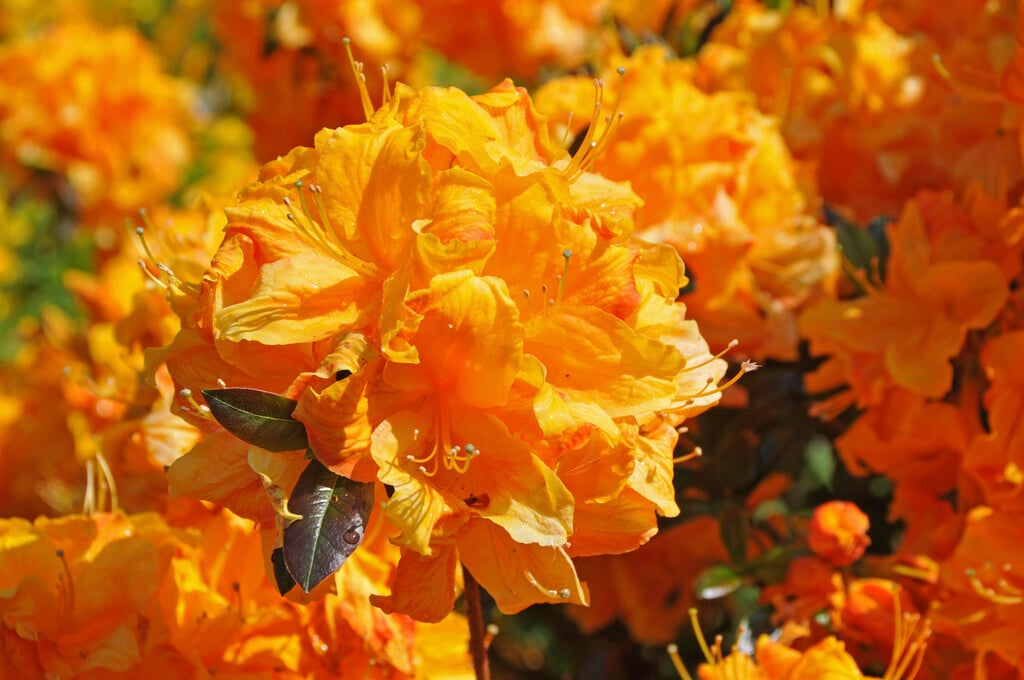Rhododendron 'Annabella' (K)
rhododendron 'Annabella'
A deciduous azalea to around 2m high, with oval-shaped, slightly glossy deep green leaves. Produces clusters of golden yellow flowers flushed with orange and pink, from dark coral-coloured buds in late spring. A Knap Hill hybrid, produced in England

Size
Ultimate height
1.5–2.5 metresTime to ultimate height
5–10 yearsUltimate spread
1.5–2.5 metresGrowing conditions
Moisture
Moist but well–drainedpH
AcidColour & scent
| Stem | Flower | Foliage | Fruit | |
| Spring | Yellow Orange Pink | Green | ||
|---|---|---|---|---|
| Summer | Green | |||
| Autumn | Green | |||
| Winter |
Position
- Full sun
- Partial shade
Aspect
East–facing or South–facing or West–facing
Exposure
Sheltered Hardiness
H6Botanical details
- Family
- Ericaceae
- Native to GB / Ireland
- No
- Foliage
- Deciduous
- Habit
- Columnar upright, Spreading branched
- Potentially harmful
- Harmful if eaten. Wear gloves and other protective equipment when handling. Pets (dogs, cats, rabbits, tortoises) Harmful if eaten - for further information and contact numbers regarding pets, see the HTA guide to potentially harmful plants
- Genus
Rhododendron can be evergreen or deciduous shrubs or trees, with simple leaves, sometimes with a dense colourful indumentum of hairs on the lower side, and funnel-shaped, bell-shaped or tubular flowers that may be solitary or in short racemes
- Name status
Accepted
- Horticultural Group
- Knap Hill and Exbury azaleas are vigorous deciduous shrubs with large, oblong leaves, and usually fragrant, trumpet-shaped flowers in shades of yellow, orange, red and white, in mid and late spring
How to grow
Cultivation
Grow in moist but well-drained, humus rich, acidic soil, in sun or dappled shade. Choose a site away from frost pockets and sheltered from strong winds. Mulch annually, ideally with leaf mould. See rhododendron cultivation for more detailed advice
Propagation
Propagate by semi-ripe cuttings in late summer, or by grafting in winter
Suggested planting locations and garden types
- City and courtyard gardens
- Cottage and informal garden
- Flower borders and beds
- Wall side borders
Pruning
Minimal pruning required, may be lightly pruned after flowering; see pruning group 1
Pests
May be susceptible to vine weevil, rhododendron and azalea whitefly, rhododendron leafhopper, pieris lacebug, scale insects, caterpillars and aphids
Diseases
May be susceptible to powdery mildews, honey fungus, silver leaf and Phytophthora, as well as more specific Rhododendron diseases
Get involved
The RHS is the UK’s gardening charity, helping people and plants to grow - nurturing a healthier, happier world, one person and one plant at a time.